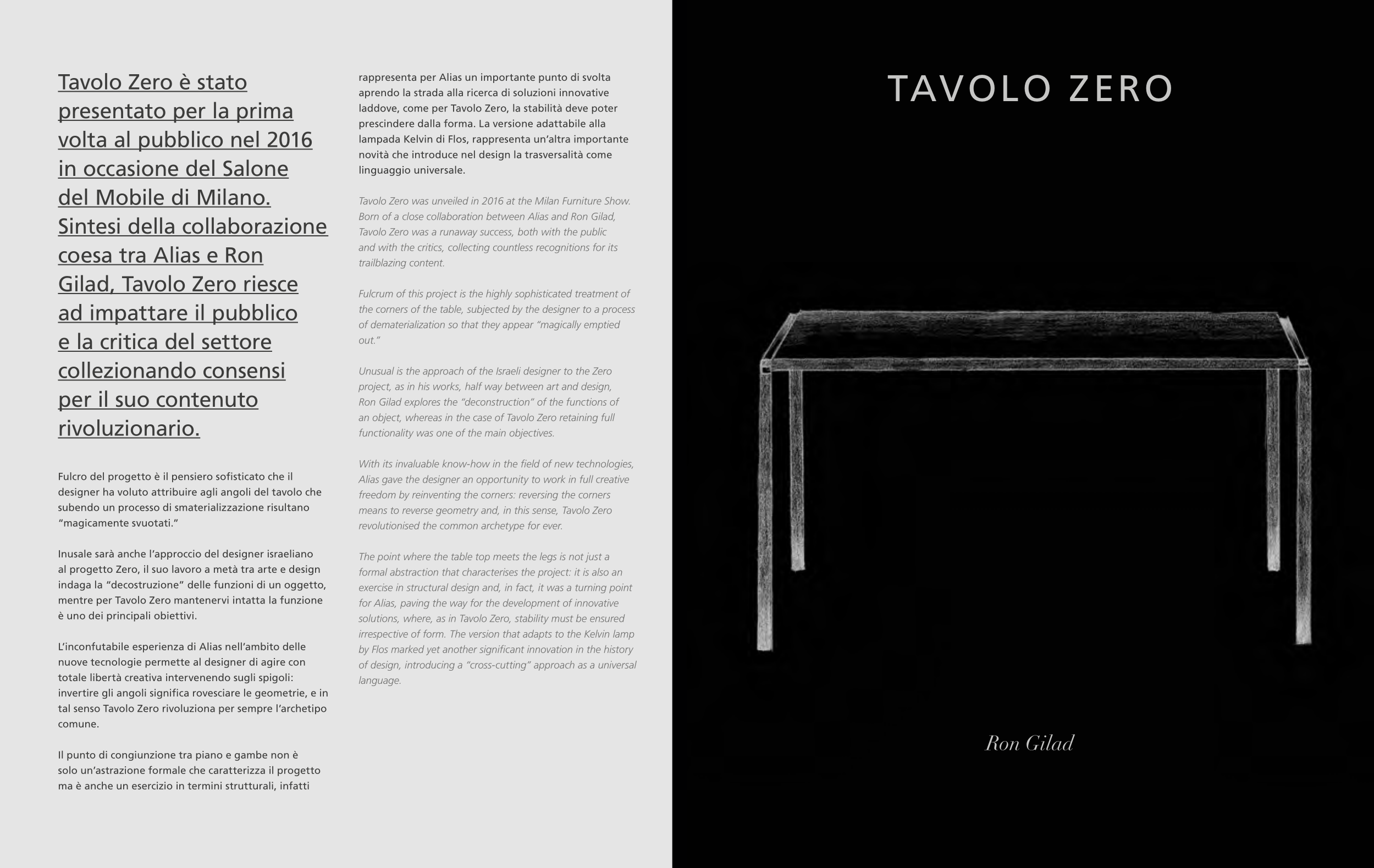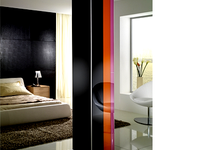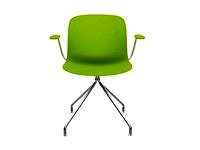Tavolo Zero è stato
presentato per la prima
volta al pubblico nel 2016
in occasione del Salone
del Mobile di Milano.
Sintesi della collaborazione
coesa tra Alias e Ron
Gilad, Tavolo Zero riesce
ad impattare il pubblico
e la critica del settore
collezionando consensi
per il suo contenuto
rivoluzionario.
Fulcro del progetto è il pensiero sofisticato che il
designer ha voluto attribuire agli angoli del tavolo che
subendo un processo di smaterializzazione risultano
“magicamente svuotati.”
Inusale sarà anche l’approccio del designer israeliano
al progetto Zero, il suo lavoro a metà tra arte e design
indaga la “decostruzione” delle funzioni di un oggetto,
mentre per Tavolo Zero mantenervi intatta la funzione
è uno dei principali obiettivi.
L’inconfutabile esperienza di Alias nell’ambito delle
nuove tecnologie permette al designer di agire con
totale libertà creativa intervenendo sugli spigoli:
invertire gli angoli significa rovesciare le geometrie, e in
tal senso Tavolo Zero rivoluziona per sempre l’archetipo
comune.
Il punto di congiunzione tra piano e gambe non è
solo un’astrazione formale che caratterizza il progetto
ma è anche un esercizio in termini strutturali, infatti
rappresenta per Alias un importante punto di svolta
aprendo la strada alla ricerca di soluzioni innovative
laddove, come per Tavolo Zero, la stabilità deve poter
prescindere dalla forma. La versione adattabile alla
lampada Kelvin di Flos, rappresenta un’altra importante
novità che introduce nel design la trasversalità come
linguaggio universale.
Tavolo Zero was unveiled in 2016 at the Milan Furniture Show.
Born of a close collaboration between Alias and Ron Gilad,
Tavolo Zero was a runaway success, both with the public
and with the critics, collecting countless recognitions for its
trailblazing content.
Fulcrum of this project is the highly sophisticated treatment of
the corners of the table, subjected by the designer to a process
of dematerialization so that they appear “magically emptied
out.”
Unusual is the approach of the Israeli designer to the Zero
project, as in his works, half way between art and design,
Ron Gilad explores the “deconstruction” of the functions of
an object, whereas in the case of Tavolo Zero retaining full
functionality was one of the main objectives.
With its invaluable know-how in the field of new technologies,
Alias gave the designer an opportunity to work in full creative
freedom by reinventing the corners: reversing the corners
means to reverse geometry and, in this sense, Tavolo Zero
revolutionised the common archetype for ever.
The point where the table top meets the legs is not just a
formal abstraction that characterises the project: it is also an
exercise in structural design and, in fact, it was a turning point
for Alias, paving the way for the development of innovative
solutions, where, as in Tavolo Zero, stability must be ensured
irrespective of form. The version that adapts to the Kelvin lamp
by Flos marked yet another significant innovation in the history
of design, introducing a “cross-cutting” approach as a universal
language.
TAVOLO ZERO
Ron Gilad







